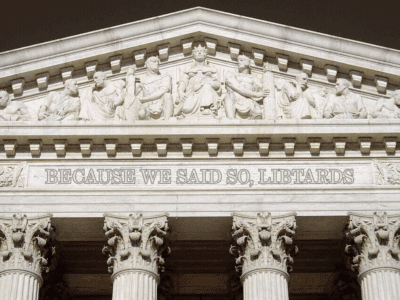Let’s Get One Thing Straight
The waiver preemption lawsuit isn’t about one national fuel economy standard.
As Ann wrote yesterday, the Association of Global Automakers and the auto companies General Motors, Toyota, and Fiat Chrysler have stated their intent to intervene in pending litigation challenging the Trump administration’s rule to preempt California’s Advanced Clean Cars program, and any future tailpipe greenhouse gas (GHG) emissions standards the state and others might seek to adopt. I want to focus in on one aspect of the messaging around the rule and intervention that I find particularly misleading—especially because it has a tendency to be misstated in the media.
I’ll start with the fact: California’s waiver does not cover fuel economy standards. California’s Advanced Clean Cars program includes tailpipe emissions standards for GHGs and a zero-emission vehicles mandate, but the regulations do not set fuel economy requirements. Why is that important? Because the Trump administration, and now the Association of Global Automakers, are claiming that the purpose of the administration’s rule is to ensure a national fuel economy standard. The New York Times quoted the chief executive of the Association as saying that the auto industry has “historically taken the position that fuel economy is the sole purview of the federal government…though it doesn’t have to come to that.”
But California, and the 23 other states opposing the Trump administration waiver preemption rule, aren’t saying that fuel economy is not the sole purview of the federal government. They are simply saying that the federal government’s purview over fuel economy standards does not entitle it to interfere with California’s longstanding right to set its own emissions control standards for cars. The administration’s narrative incorrectly implies that California and other states have crossed the line by trying to regulate fuel economy—but they haven’t done that at all. Instead, it’s the administration that is crossing the line, trying to use its authority to regulate fuel economy as a sword against GHG emissions standards. That’s a position that courts have already rejected multiple times.
In addition, the claim that the Association is intervening in the litigation to preserve “one national program” is disingenuous, as Ann pointed out. Even the Association’s CEO explained that “[s]ince 2010, America has had a unified fuel economy and greenhouse gas emissions program,” and that was true until the Trump administration acted to upset that program with its rule. The Association has tried to lay the blame at the feet of both the administration and California, saying that “[r]ecent federal and California rulemakings threaten to upend this balanced approach,” but that, too, is a false narrative. There has been no recent California rulemaking on this score—and the set of regulations for which California sought and was granted the waiver six years ago is the very set of regulations that created the harmonized standard. Only the administration is to blame for “creating uncertainty for consumers, auto workers, retailers and manufacturers.”
It is troubling to see these narratives restated in the news. The set of federal and state regulations at issue are complex; the waiver preemption rule and the litigation challenging it are, at their core, about the federal government’s tendency to conflate tailpipe GHG emissions standards with fuel economy standards. But they are not the same thing, and we should resist that framing when thinking and talking about these laws.






Reader Comments